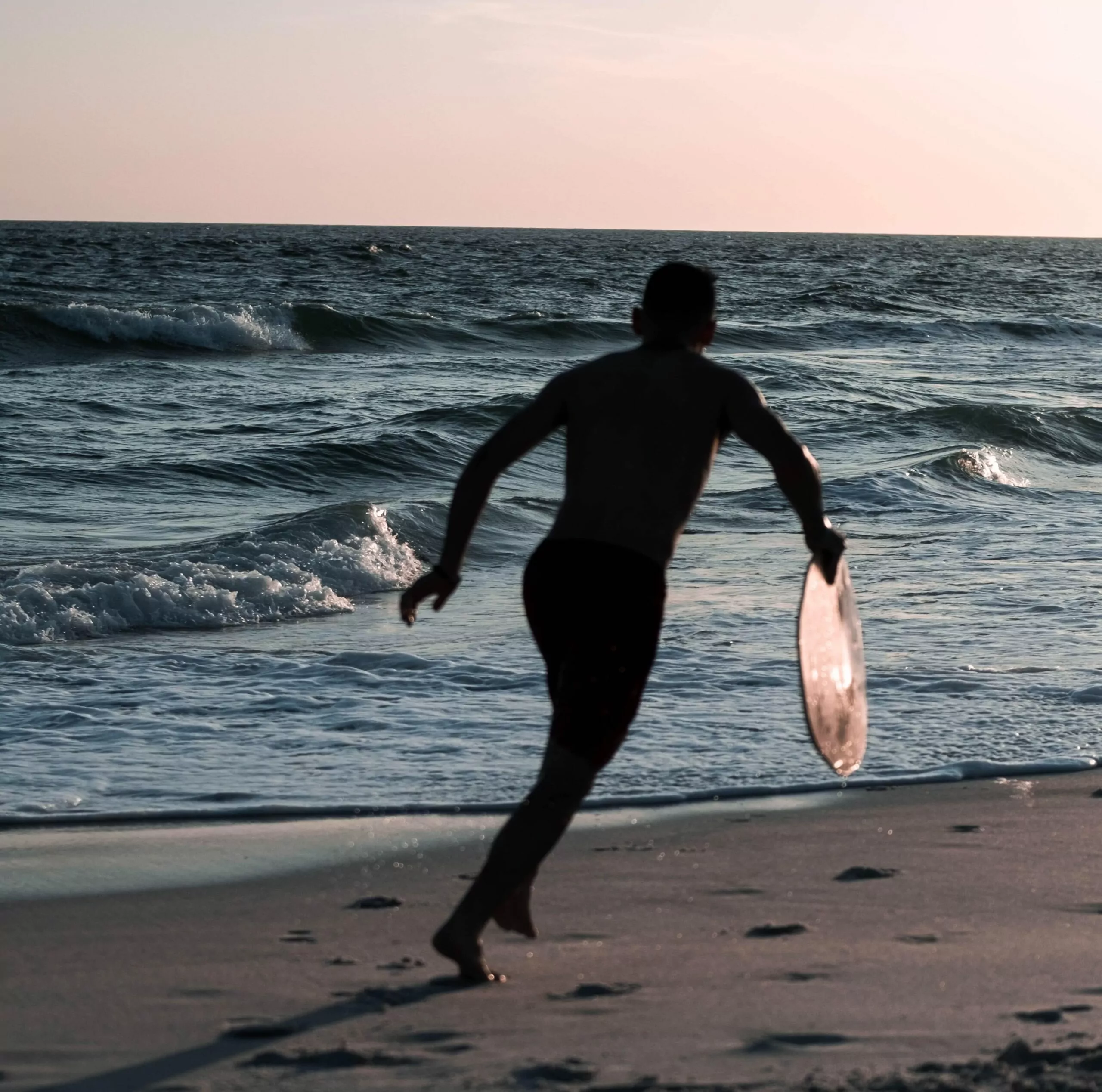First and foremost, let’s clarify the most important question: what is the definition of skim boarding?
Skimboarding can be described as a sport that involves riding a small, thin board across a shallow body of water, such as a beach or lake. Skimboarders use the board to perform tricks, stunts and jumps off of waves and ramps.

Equipment:
The most important piece of equipment is a skimboard. Skimboards come in a variety of sizes and shapes, so you’ll want to find one that fits your body type and skill level. For beginners, it’s best to start with a wider, thicker board that will provide more stability.
You’ll also want to make sure you have a decent pair of swim fins that will help you stay afloat and move quickly over the water.
How hard is Skimboarding?
In this section we will analyze the difficulty of skim boarding from different angles: we will look at the physical challenges, mental challenges, the learning curve, and the importance of using a proper skimboarding technique.
Physical Demands
Skimboarding overall requires strength, agility, and balance. There are some universal demands that all skimboarders must be prepared to meet:
- Maintaining a steady stance while running,
- Balance and precision when launching into the water,
- Upper body & core strength for coordination and endurance,
- Leg strength is important for launching and maneuvering on the board.
- Good reflexes in order to react quickly to changing conditions.
Mental Demands
If the physical criteria are met, then skimboarders need to ensure they can cope with the following mental challenges:
- Mental focus, discipline, and experience to spot the best conditions to skim on.
- Mental risk of overestimating their skills: in the most extreme cases, this could lead to miscalculations and potential injuries.
- In the beginning, skim boarding will feel very hard for most people. The main mental demand here will be to push through the learning barriers and refuse to give up.
Learning curve
The learning curve of skim boarding can be quite steep and represents the amount of time and effort it would take to learn how to master the activity.
The curve can be broken down into four stages: beginners, learning the basics, mastering the basics, and advanced.
Beginners must first learn the basics of the sport, such as how to stand on the board, how to turn, and how to jump. As the beginner progresses, they may begin to learn more advanced maneuvers, such as carving and riding in the pocket of a wave.
After mastering the basics, the skimmer can then move on to more advanced techniques, such as airs and spins. The learning curve for skim boarding is steep, but the rewards are great. With practice and dedication, anyone can become an experienced skimmer and have a great time on the water.
Importance of technique
Knowing the right technique is essential to making the most of your skim boarding experience. Having the right technique will help you maximize the speed and lift of your board, as well as help you stay stable and balanced while riding.
Final thoughts
In conclusion, skimboarding can be a fun and unique way to enjoy the beach. It is a great way to challenge yourself both physically and mentally and to improve your balance and coordination.
It allows you to explore different beaches across the country (or the world) and can be a great way to make friends and meet people. On top of that, it is also a great way to get out and enjoy nature, and it can also be a great way to relax and unwind.
Skimboarding is a fantastic sport and I encourage anyone interested to give it a try!
- How to Choose a Skim Board - September 10, 2023
- is Skim Boarding Hard? - February 8, 2023
- How To Wax a skim board - February 8, 2023










